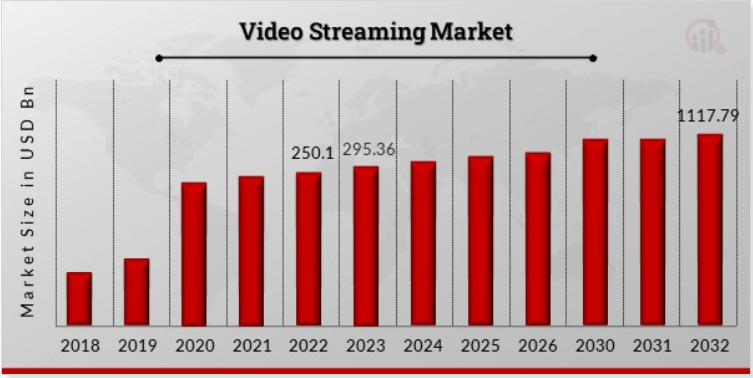‘Ayrılık Da Sevdaya Dahil’ Starring Kenan İmirzalıoğlu: Everything We Know So Far
Global TV and broadcast market to generate $700 billion in 2023

It has been claimed that the global TV and broadcast market will be worth $700 billion worldwide in 2023, of which $164 billion will be invested in programming.
Reporting on Omdia Digital Content and Channels Specialist Tim Westcott’s presentation at Mipcom, The Variety, in its article titled “Global Streaming and TV Market Revenues Set To Reach $700 Billion for 2023“, pointed out that Westcott said that the $700 billion figure is based on the sum of advertising, subscription and public revenues. It was emphasized that this figure showed a 77 percent increase compared to the total of $394 billion in 2010.

Westcott’s remarks were part of Omdia’s forthcoming research on the global programming market. “We did this research from the ground up, estimating spending by broadcasters, channels and platforms in 119 countries,” said Westcott, who said they had made an estimate of the size of the worldwide TV programming market.
Increase in online subscriptions
According to the report, within this amount of 700 billion dollars, online subscriptions constitute 47 percent, while advertisements have a rate of 48 percent and public revenues have a rate of 5 percent. In 2010, the same percentages were 45, 45 and 10 percent, respectively. The US represents 43 percent of this figure, with Asia and Oceania accounting for 25 percent and Western Europe 18 percent.
Westcott added that, according to Omdia, investment in programming in the US is down by only 1 percent compared to 2022: “In terms of growth overall, investment is now fairly stable. In 2023, we expect worldwide spend to go up overall 1 percent from the year before. The streamers have been thebig driver of growth and programming spend over the past 5-10 years, especially Netflix. But at Omdia we are expecting subscription numbers to reach a plateau next year.
The studios, in particular, have been competing with the streamers by investing in content. Certain other players like Sky and RTL have been investing too. But other companies have been under pressure to improve profits and decrease programming spend. Disney and WarnerBros. Discovery are both cutting costs, including programming. There is growth in online advertising, but not traditional linear TV advertising.”
Decline in the number of series
The report also noted the decline in the number of scripted and unscripted shows on US networks next season, with 43 series starting so far this season in 2023-24 (179 in 2019).
Westcott said, “The number will increase with new shows launching later in the season. The aim was to show the strikes have disrupted the new season and lead to threadbare schedules on the network as far as new seasons, episodes are concerned. The trend from 2019/2020 shows that 2022/23 shows the networks have already been reducing the number of new shows.”
In the U.S, in 2022, linear viewing represented just 45% of total viewing and only 48% in the U.K. In some European countries like Italy, linear TV accounted for 80% of viewing. In Spain, it accounted for 73%, the report stated.
US giants continue to invest in traditional TV
According to Omdia, major US groups still invest more in legacy linear channels than online programming. And US producers still top the list of the top 20 TV producers.
According to the report, the five biggest groups by TV production and distribution revenues are again US studios, as they were in 2021. But NBC Universal came out on top, overtaking Walt Disney with revenues of $8.71 billion for 2021-22. According to the report, NBC Universal showed a 15 percent increase in revenues, while Walt Disney Co experienced a 27 percent decline.
Banijay was the largest of Europe’s three top ten groups. France overtook the UK to become the largest global market in terms of production company acquisitions.
Noting that co-productions are becoming a trend, Westcott said that this is one of the models that producers are exploring. Westcott also noted that TV producers are moving to a model where they have to raise money to get a show made, as they do with independent films.
Trends in the entertainment and media sector and VSM
2022 was seen as a major milestone for the entertainment and media industry as a whole.
According to PWC’s 2022 research, global revenue in this area increased by 5.4% compared to the previous year, reaching 2.32 trillion US dollars. Although it meant a slowdown compared to the 10.6 percent growth rate in 2021, the figures for 2022 were presented as remarkable.

Additionally, the Video Streaming Market size was estimated at USD 250.1 billion in 2022.
In the reports published for the Video Streaming Market (VSM), the market size was estimated at USD 250.1 billion in 2022. VSM was projected to grow from USD 295+ billion in 2023 to USD 1117+ billion by 2032, exhibiting a compound annual growth rate (CAGR) of 18.10 percent over the forecast period (2023-2032).












